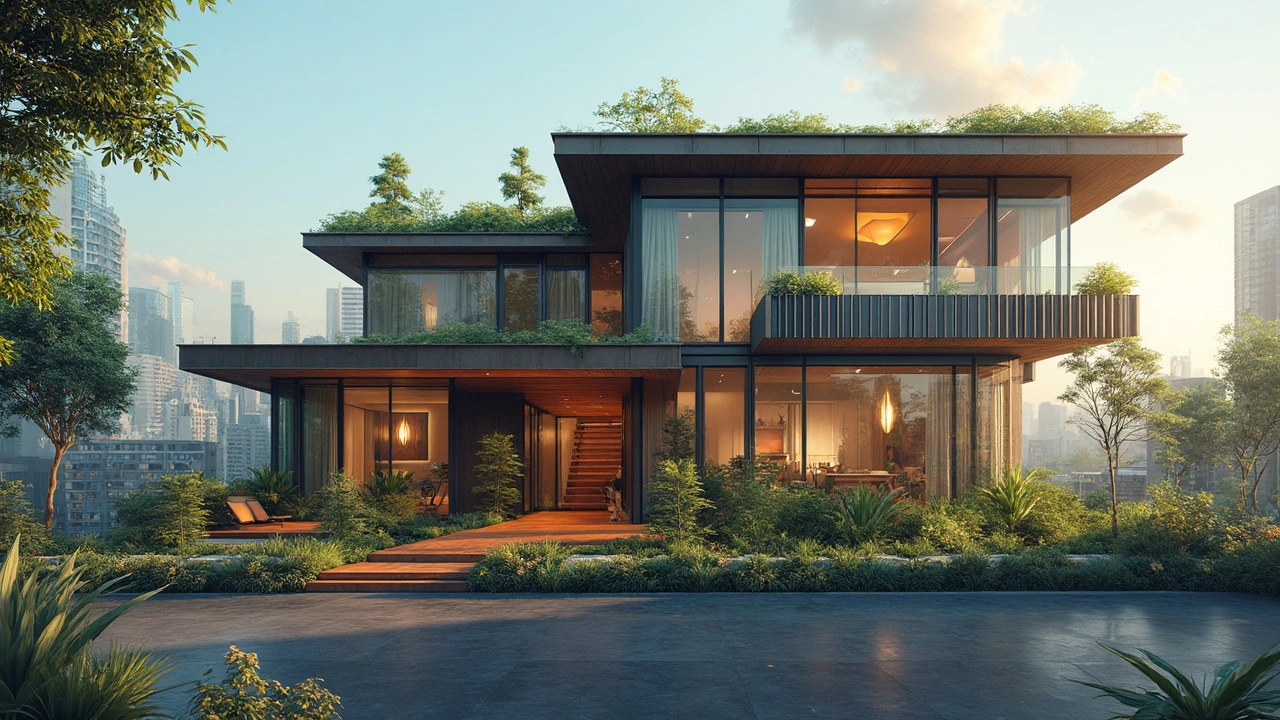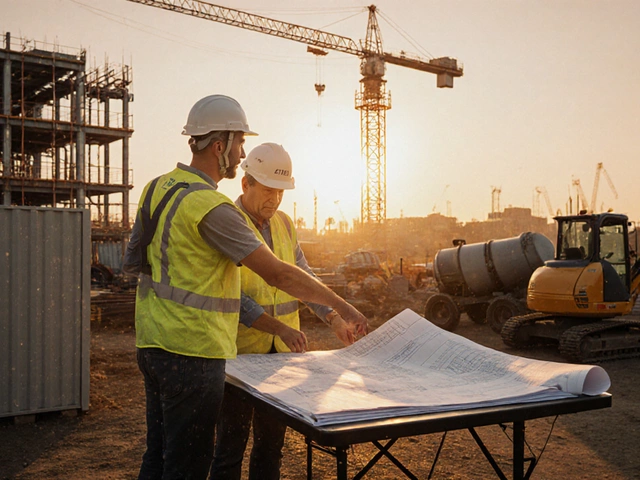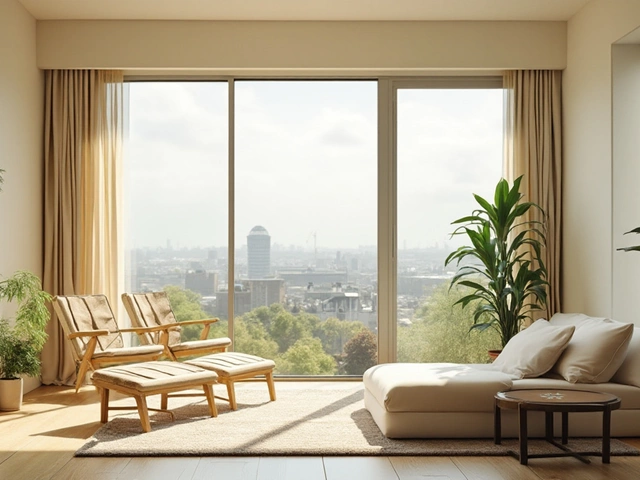
When you're building a house, thinking about what materials will last the longest is super important. Who wants to spend big bucks on a dream home, only to have it fall apart a few years later?
Stone has been around forever and with good reason. It’s one of those rare materials that can laugh in the face of harsh weather and get through it unscathed. Imagine a rustic stone cottage in the countryside—yep, that's a classic for a reason! It's tough, but remember, you might need to reach deeper into your wallet because skilled labor for stone isn't the cheapest.
Concrete is like that reliable friend who's always there for you. It's used a lot in modern construction because it's crazy strong and affordable. Reinforced concrete is even better—think of it like concrete with superpowers. It can withstand earthquakes and all sorts of other natural shenanigans, making it a top pick for many builders.
- Stone: The Timeless Classic
- Concrete and Its Modern Applications
- Steel Structures: The New Age Strength
- Emerging Green Materials
Stone: The Timeless Classic
If you've ever marveled at ancient castles or cozy cobblestone cottages, you know that stone is truly a timeless classic in house building. It's been used for centuries, and for good reason. Stone is not just about eye-catching appeal; it's also about durability and resistance to the elements.
One big plus of using stone is its longevity. This material can withstand pretty much anything nature throws at it—be it fire, water, or sweltering summer heat. You might find some stone structures that are hundreds of years old, still standing strong, and looking good. Now, that's a material that knows how to hang in there!
There are different types of stones to choose from, each with its unique qualities. Granite is super tough and resistant, making it an excellent choice for foundations and other structural purposes. Limestone, while not as hard as granite, brings an earthy aesthetic that many folks love for facades and walls.
Working with stone does, however, come with its challenges. It's heavy and not exactly the easiest stuff to move around. Plus, it requires specialized skill sets to properly cut, shape, and position. So builders often factor in higher labor costs when estimating a stone project.
Still, for those committed to longevity and style, stone is a worthy investment. It not only promises strength but also adds a dose of class to any home, unlike any other material. It’s like giving your home a timeless suit of armor!
If you are thinking about the costs, consider that upfront expenses may be higher, but the need for long-term maintenance is low. Energy efficiency is another bonus as stone naturally regulates indoor temperatures. So, while the initial game might be pricey, over time, it could save you some pennies on utility bills.
Concrete and Its Modern Applications
Concrete is pretty much the backbone of modern construction. It's not only incredibly strong and versatile but also relatively affordable, making it a go-to for many builders looking to create durable building materials. Whether you're constructing a modest home or a towering skyscraper, concrete just fits the bill.
So, what makes concrete so special? Well, when it's mixed with steel—creating reinforced concrete—you get a material tough enough to handle earthquakes, harsh weather, and a whole bunch of other challenges. Imagine being able to rely on a material that can keep its cool under pressure. That's reinforced concrete for you! It's no wonder that it’s found in the foundations of so many structures worldwide.
- Strength and Durability: Concrete is known for its impressive compressive strength, meaning it can handle a lot of weight without buckling. This makes it ideal for foundations, floors, and walls.
- Versatility: You can mold concrete into just about any shape, which is a huge plus for architects looking to get creative.
- Resistance to Fire and Water: Concrete won't burn, and when properly sealed, it can also resist water, cutting down on the risk of rot and decay.
One of the coolest things about concrete is that it’s also evolving with technology. New types of concrete are being developed, like self-healing concrete, which can automatically fill in cracks. Imagine a material that repairs itself—no more worrying about those tiny cracks that usually lead to bigger problems down the line.
And let’s not forget about its eco-friendly upgrades. With the push towards green building materials, concrete mixes now often include recycled materials, reducing waste and energy consumption during production. This makes it not only a strong choice but a smart one for the planet.
| Feature | Benefit |
|---|---|
| Reinforced Concrete | Handles natural disasters like earthquakes. |
| Recycled Mixes | Reduces environmental impact. |
So, whether you're planning to build your next home or just curious about what holds our modern cities together, concrete's got a lot to offer. It’s like the workhorse of construction—always reliable, and surprisingly innovative with its modern applications. Plus, with new smarter and greener versions being developed, it's only getting better over time.

Steel Structures: The New Age Strength
When it comes to building materials that last, steel is like the superhero of construction. Known for its insane strength-to-weight ratio, steel is lightweight yet incredibly strong, making it a go-to choice for modern homes.
One huge perk of steel structures is their flexibility. They can withstand things like earthquakes and strong winds much better than traditional materials. So if you're thinking about building a home in a place that sees a lot of natural chaos, steel might just be your best bet.
And let’s not forget, steel is also pretty eco-friendly. Most steel used in construction is made from recycled materials, and once its job in your home is done (a long time from now, hopefully!), it can be recycled again. Talk about sustainability!
Thinking about the cost? While steel can be a bit more expensive upfront than, say, wood, it pays off in the long run. Why? It requires less maintenance and has a longer lifespan, so you could end up saving money down the line.
Here’s a quick look at some benefits of using steel in construction:
- Durability: Major resistance to fire and pests, reducing long-term repair costs.
- Design Flexibility: Easily molded and adjusted for various architectural designs.
- Quick Installation: Prefabricated steel structures make for faster builds.
So, next time you're considering options for a new-build or even a renovation, keep steel in mind. Its benefits in terms of durability, eco-friendliness, and long-term cost savings make it a solid choice for building a house that truly stands the test of time.
Emerging Green Materials
Building a house that's both sustainable and durable is getting easier and more popular every year. These days, emerging green materials are making waves in construction. They not only contribute to a reduction in environmental impact but also tend to be surprisingly robust.
One standout is cross-laminated timber (CLT). Think of it as wood but on steroids; it's lightweight, renewable, and impressively strong. CLT panels are made from stacking layers of wood perpendicular to each other, giving them the kind of strength you’d expect from steel or concrete. Plus, they're pretty friendly to work with, especially when you're aiming for a smaller carbon footprint.
Then there's straw bale construction—nope, not for pigs! Properly constructed, straw bales can create well-insulated walls that are surprisingly fire-resistant. You get the added benefit of a material that’s easily recyclable and great at keeping your home toasty warm or cool without jacking up the energy bills.
If you’re looking for something a bit more futuristic, look no further than hempcrete. Yep, it's hemp-based concrete and incredibly light. While it’s not load-bearing, it works like a champ for insulation. It helps regulate moisture and temperature inside your home, cutting down on energy use.
| Material | Renewability | Average Lifespan |
|---|---|---|
| Cross-Laminated Timber (CLT) | High | 50+ years |
| Straw Bale | High | 100+ years with maintenance |
| Hempcrete | Medium | 50-100 years |
These materials might not be mainstream yet, but they’re gaining traction as more people look to build homes that are kind to the earth and built to last. So, if you’re planning your next construction project, it might be worth exploring these construction materials to set your house apart, both now and in the future.




